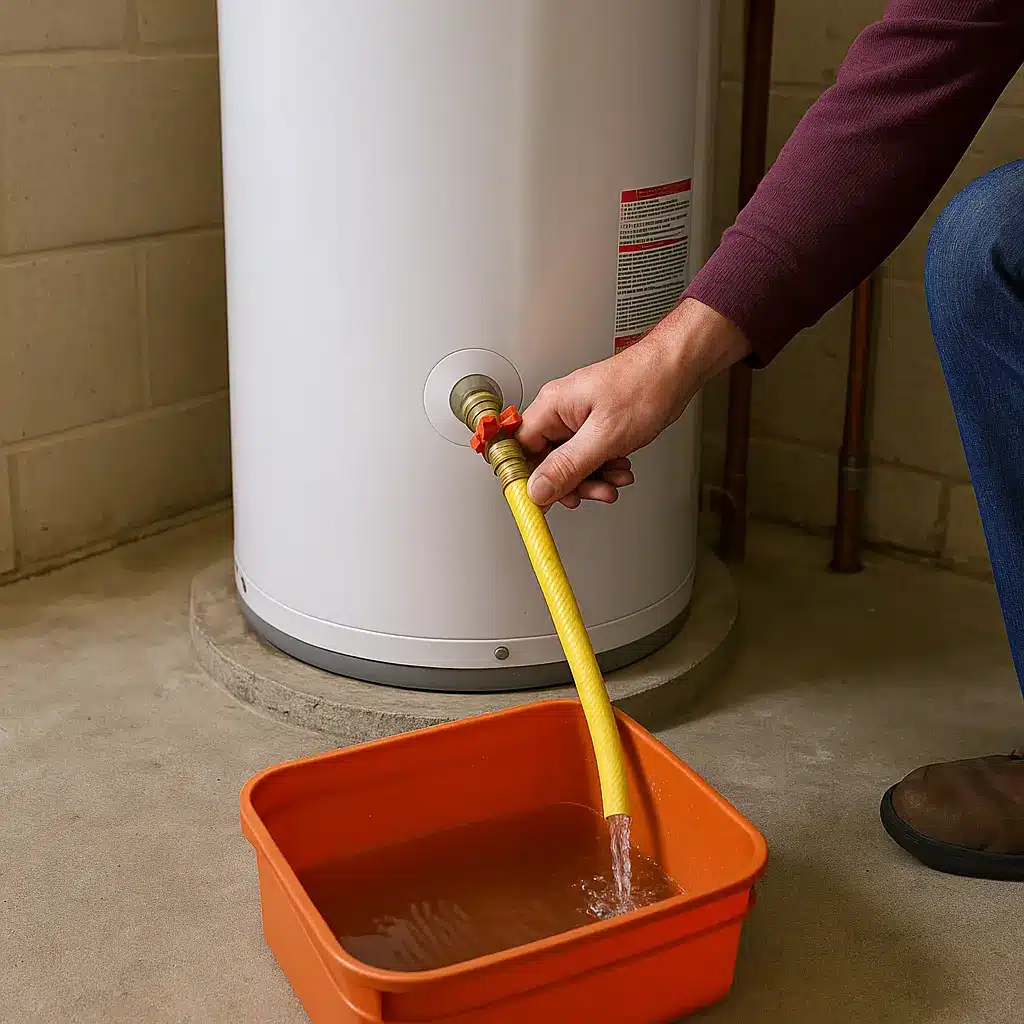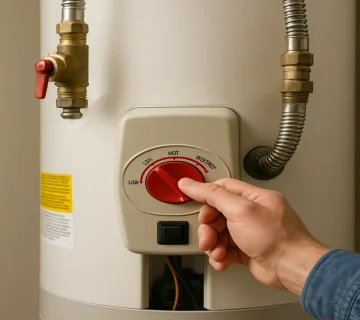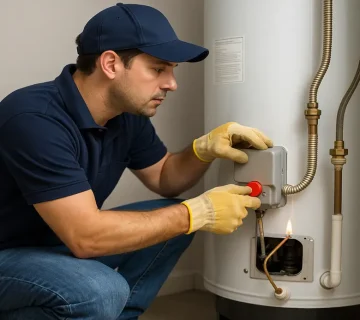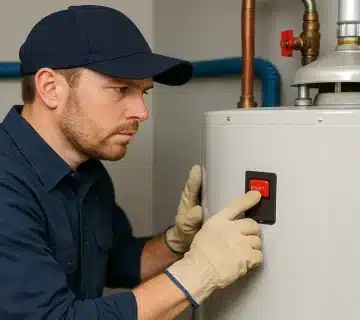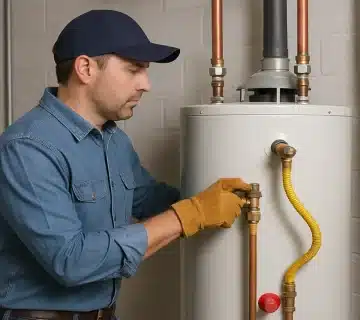Your water heater works quietly behind the scenes every day, delivering hot water for showers, laundry, and cleaning. But over time, sediment and minerals build up inside the tank. If left unchecked, this buildup can cause noise, reduce efficiency, and even damage the heater. That’s why knowing how to drain a water heater is an important skill for every homeowner.
In this article, we’ll show you exactly how to drain a water heater safely and efficiently, while also sharing pro tips and answering common questions.
Why Should You Drain a Water Heater?
Many homeowners ignore their water heater until a problem arises, but regular maintenance can prevent costly repairs. Draining your water heater:
- Prevents sediment buildup that insulates heat and reduces efficiency.
- Reduces stress on the heating element or burner.
- Improves water quality, preventing rusty or cloudy water.
- Extends lifespan, allowing your unit to last years longer.
- Reduces noise, eliminating popping or crackling sounds caused by trapped sediment.
If your water heater has been making unusual noises, heating more slowly, or delivering less hot water than before, it may be time to drain it. For more help, see this detailed guide from The Spruce on how to drain a water heater correctly. ”
How to Drain a Water Heater – The Spruce The Spruce
How Often Should You Drain It?
Experts recommend draining your water heater once a year. However:
- Hard water areas: Drain every 6 months to combat faster mineral buildup.
- Soft water areas: Once every 12–18 months may be sufficient.
- Older heaters: More frequent draining can reduce the risk of sediment clogging the system.
If you’re unsure how often or even how to drain a water heater, following the manufacturer’s instructions and this guide will help.
Tools You’ll Need
Before starting, gather these items:
- Garden hose
- Bucket or floor drain
- Safety gloves and goggles
- Flathead screwdriver or wrench (for the drain valve)
- Towels or rags (in case of spills)
Having everything ready will make the process faster and safer.
5 Steps: How to Drain a Water Heater
1. Turn Off Power or Gas
- Electric heater: Switch off the breaker.
- Gas heater: Set the thermostat to “pilot.”
2. Shut Off the Cold Water Supply
Close the cold-water valve at the top of the heater to stop new water from entering.
3. Connect a Garden Hose
Attach the hose to the drain valve near the bottom. Place the other end in a drain, outside, or into a bucket.
4. Open a Hot Water Tap
Turn on a hot water faucet in your home to relieve pressure and allow smooth draining.
5. Drain the Tank
Open the drain valve and let the water flow out completely. When the tank is empty, close the valve, remove the hose, and reopen the cold-water supply. Wait until the tank refills before restoring power or gas.
Pro Tips & Safety Notes
- Cool the water first: If possible, turn off the heater a few hours in advance so the water isn’t dangerously hot.
- Check the water color: Brown or cloudy water signals heavy sediment buildup.
- Test the TPR valve (temperature-pressure relief) to ensure it works.
- Flush after draining: “For deeper cleaning beyond draining, you can also learn how to flush a water heater.
- Don’t force stuck valves: If the drain valve won’t open, call a plumber to avoid damaging the heater.
Once you learn how to drain a water heater properly, the process becomes quicker and safer every time you do it.
FAQ: How to Drain a Water Heater
Is draining the same as flushing?
No. Draining removes all the water from the tank, while flushing adds fresh water to push out sediment. Many homeowners do both at once.
Can I drain my water heater myself?
Yes, with basic tools. Just follow the steps carefully. If your heater is older or the valve is corroded, it may be safer to call a professional.
How long does it take to drain a water heater?
On average, 20–30 minutes. Larger tanks or heavy sediment may take longer.
Do I need to drain tankless water heaters?
Tankless units don’t require draining, but they should be descaled to remove mineral buildup.
If draining doesn’t fix performance issues, watch for these important signs to replace your water heater.
Final Thoughts
If you’ve been wondering how to drain a water heater without calling a plumber, the answer is simple—it only takes a few easy steps. Learning how to drain a water heater is one of the simplest yet most effective ways to maintain your home’s hot water system.
By draining it once or twice a year, you’ll prevent sediment buildup, reduce energy costs, and extend the life of your heater. With a hose, a bucket, and a little time, you can do this task yourself and avoid future headaches.
Once you know how to drain a water heater, it’s also smart to follow these tips to extend your water heater’s lifespan.

